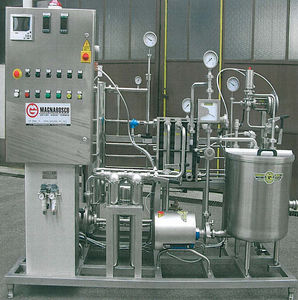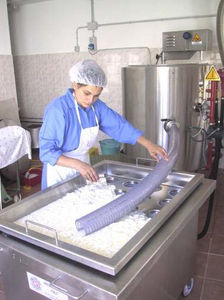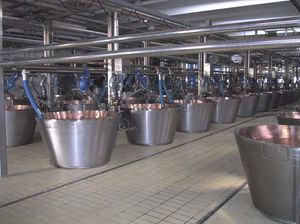
Cheese brining system
Add to favorites
Compare this product
Description
Pictures above show only the processing of a dynamic plant for automatic salting of Grana Padano cheese, and this
technology is applied to Parmigiano Reggiano salting too.
1) Pict.1 shows a detail of the salting cages entered into brine, as well as the automatic systems for door opening to
introduce or extract the moulds from cages;
2) After holding time and moulding through conveyor belts, the moulds are automatically entered into the salting plant
(pict.2);
3) The pieces are automatically transferred to the salting cages (pict.3) by means of a brining flow;
4) With this type of plant, Grana Padano usually stays in brine from 16 to 18 days (pict.4);
5) After holding time in brine, the cheese is automatically extracted from the salting cages (pict.5), by means of a brining
flow;
6) The same flow transfers the cheese to the conveyor belt removing the pieces from the plant and sending them to
drying and maturing sections through other conveyor belts.
In automatic dynamic salting plant different brine treatments are foreseen, among which there are the continous filtering,
the constant maintenance of brine temperature and the automatic recycles to keep concentration constant and create
the brine dynamic flow.
Catalogs
No catalogs are available for this product.
See all of Magnabosco‘s catalogsRelated Searches
*Prices are pre-tax. They exclude delivery charges and customs duties and do not include additional charges for installation or activation options. Prices are indicative only and may vary by country, with changes to the cost of raw materials and exchange rates.







